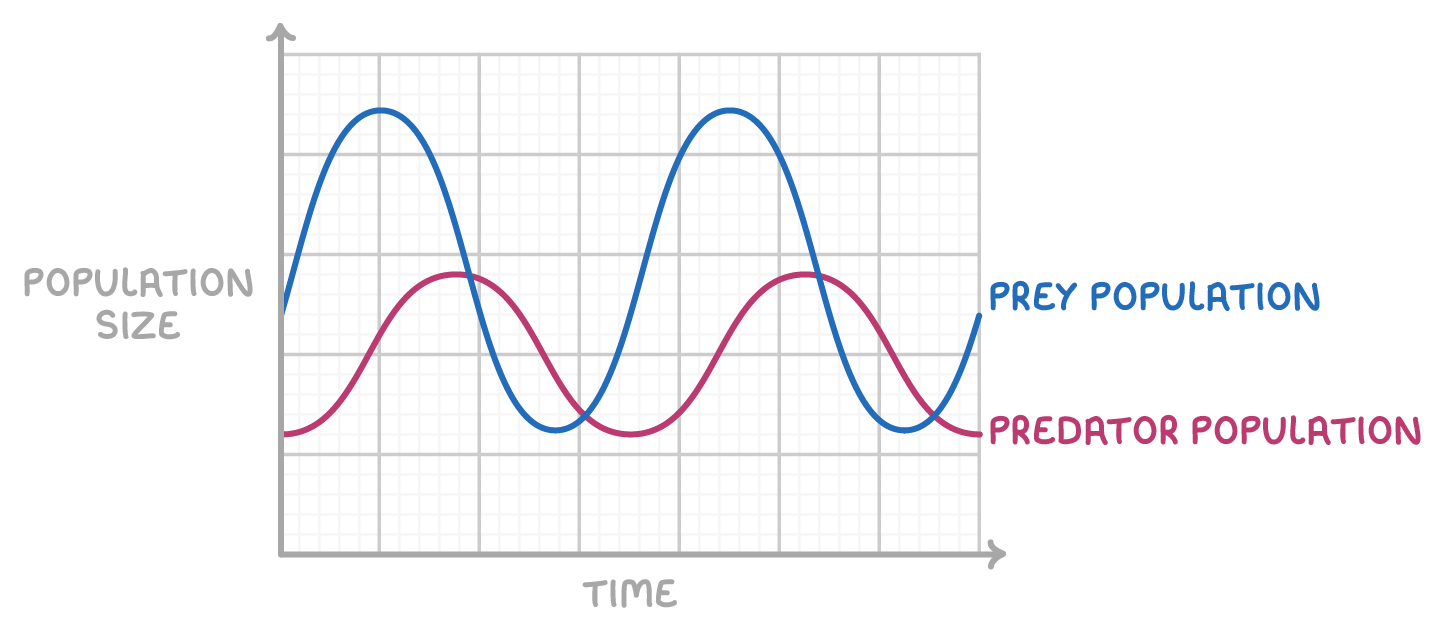Competition & Predation
This lesson covers:
- Types of competition between organisms
- Interspecific competition and the competitive exclusion principle
- Stages of intraspecific competition
- Predator-prey relationships
Types of competition
Competition is a biotic factor that can limit population sizes by decreasing the availability of resources.
There are two main types of competition:
- Interspecific competition - Occurs between different species.
- Intraspecific competition - Occurs within the same species.
Both types can reduce the access to essential resources such as food, shelter, and mates, which in turn can limit growth, reproduction, and the size of the population.
Interspecific competition
Interspecific competition occurs when individuals of different species compete for resources such as food, water, breeding sites, light, space, or shelter.
The competitive exclusion principle:
- This suggests that when two species are competing for the same limited resources, the species that uses these resources more efficiently will eventually outcompete the other.
- The more efficiently adapted species uses the necessary resources, preventing other species from accessing them.
- Over time, the less competitive species may reduce and eventually become locally extinct.
Intraspecific competition
Intraspecific competition occurs when individuals of the same species compete for resources such as food, water, breeding sites, light, space, or shelter.
It results in natural population fluctuations:
- When resources are plentiful, survival and reproduction increase, leading to a rise in population size.
- Too many individuals increases competition, reduces available resources, and causes population decline.
- A decrease in competition allows for greater access to resources, leading to population recovery, and the cycle starts again.
Predator-prey relationships
Predation involves the hunting and consumption of one species (the prey) by another (the predator).

The interplay between predators and prey affects their population sizes:
- An increase in prey population provides more food for predators, leading to an increase in the predator population.
- A rise in the number of predators causes more predation on the prey, resulting in a decrease in the prey population.
- An lack of prey increases competition among predators for food, which leads to a reduction in predator numbers.
- A decrease in predators allows for the prey population to survive and reproduce more successfully, causing a rise in their numbers and restarting the cycle.
Typically, there is a lag between the peak population sizes of predators and their prey. This can be seen in the graph above.
The predator-prey dynamic exerts a selection pressure on both groups. Prey that are more effective at evading predators tend to survive and reproduce, driving evolutionary changes. Consequently, predators evolve more efficient methods of hunting prey. Some of these adaptations are shown in the table below.
| Typical adaptations of predators | Typical adaptations of prey |
|---|---|
| Sudden bursts of speed | Mimicry |
| Stealth | Protective features like spines |
| Camouflage | Camouflage |
| Better prey detection, like forward-facing eyes with sharp vision | Better predator detection, like side-facing eyes for a broader field of vision |